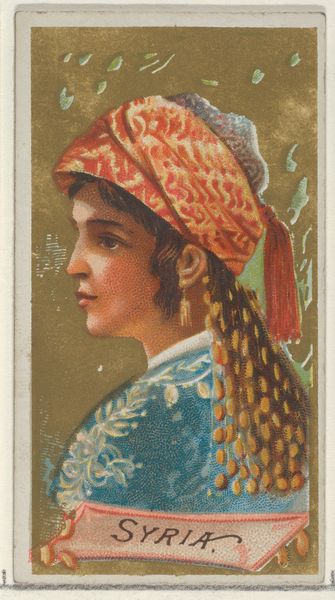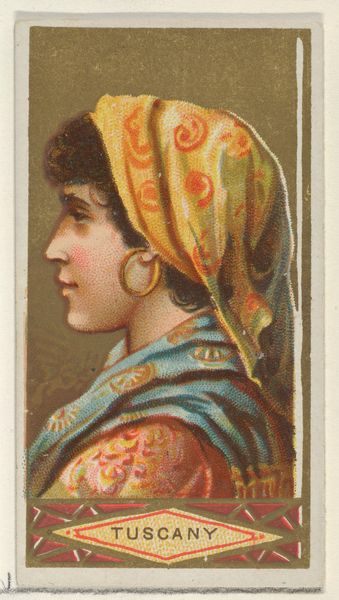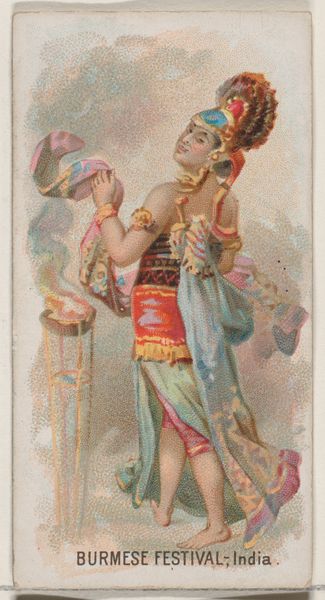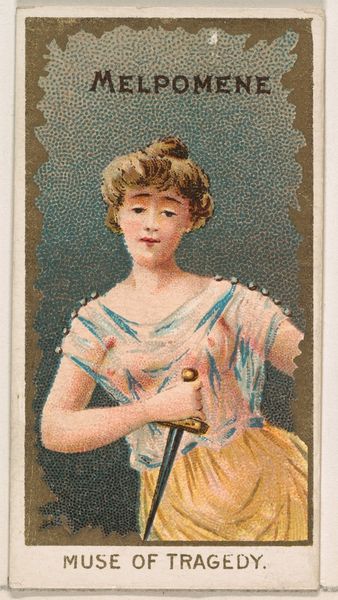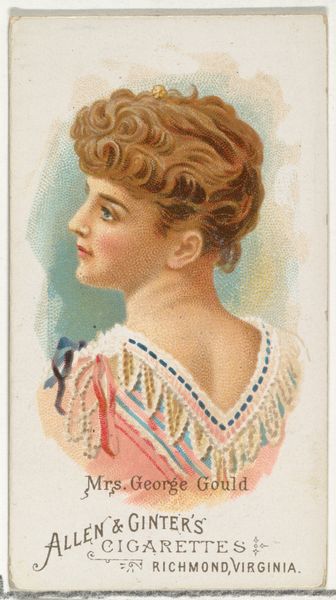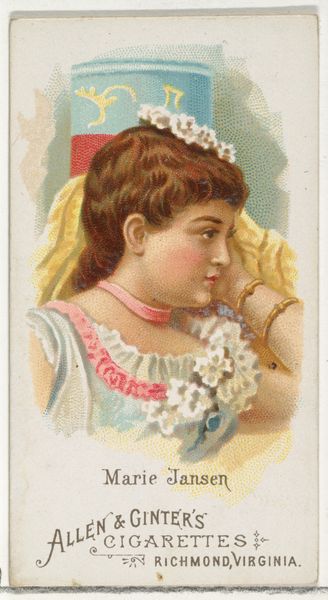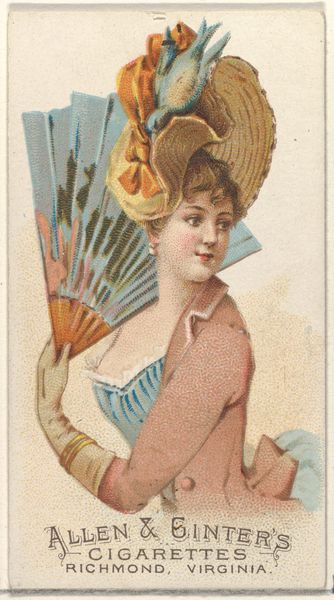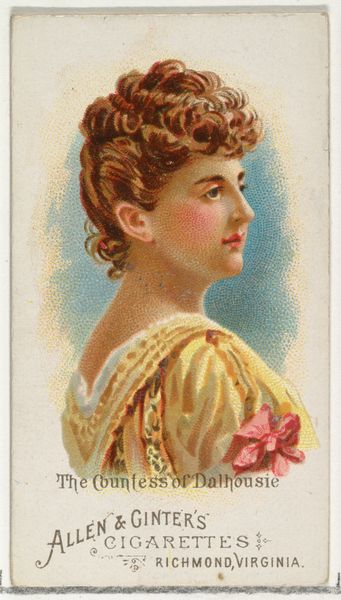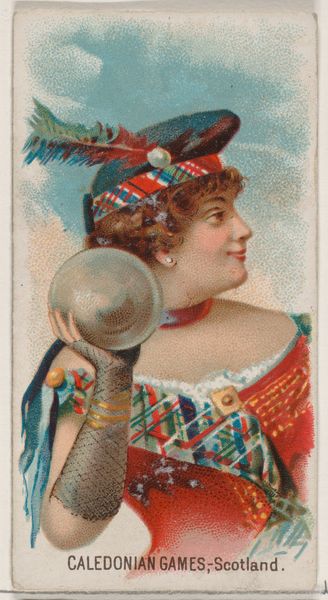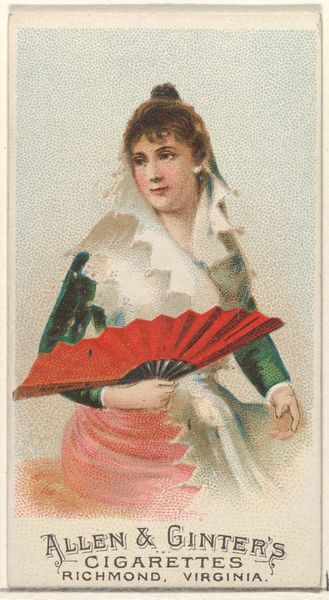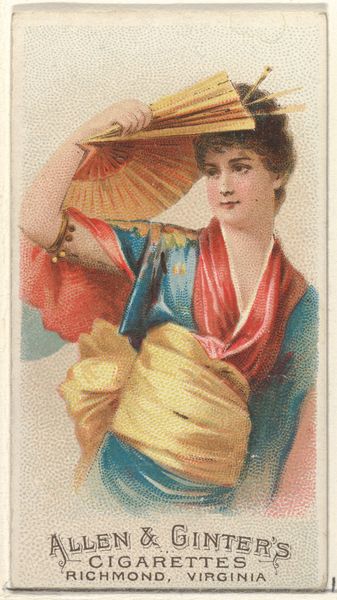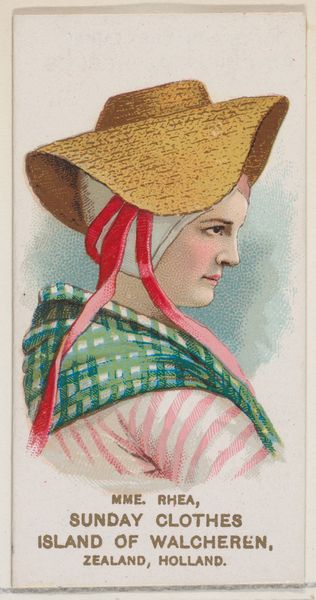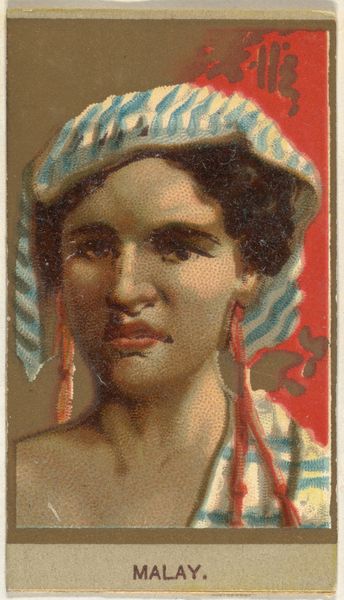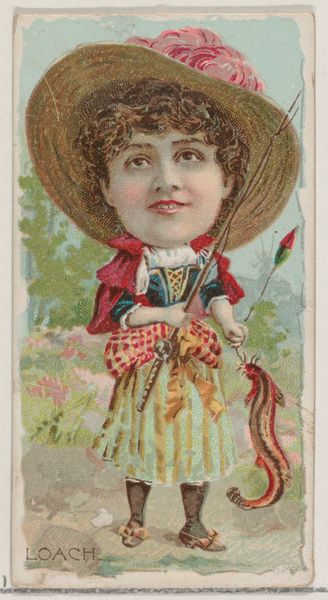
Parliament Day, Japan, from the Holidays series (N80) for Duke brand cigarettes 1890
0:00
0:00
#
water colours
# print
#
figuration
#
orientalism
#
japonisme
#
watercolour illustration
Dimensions: Sheet: 2 3/4 x 1 1/2 in. (7 x 3.8 cm)
Copyright: Public Domain
Curator: This artwork is called "Parliament Day, Japan," a print made by W. Duke, Sons & Co. around 1890. The medium seems to be watercolor and it’s currently held at the Metropolitan Museum of Art. It’s fascinating how they've captured this scene in miniature! What strikes you most about it? Editor: I find the subject matter very interesting, in terms of composition it looks as if an idealized female figure has been placed in front of a kind of public performance. How can a watercolor be commercially purposed as a print for tobacco products? Curator: Exactly. Let's consider the means of production here. We're looking at an example of Japonisme filtered through commercial interests. The watercolor would've been a design, then reproduced en masse as a chromolithograph for cigarette cards. This bridging of 'high art' aesthetics with everyday commodity challenges the usual hierarchy. Do you think the consumers in America at this time would view tobacco in a different way due to owning something such as this? Editor: That's really intriguing. It’s easy to imagine this card being used to promote or endorse tobacco as being glamorous. I am assuming the labor to produce the print was off-shored to a non-Western area, such as Japan? Curator: Very possibly, although, further research would be needed. These types of prints highlight a colonial gaze; "Parliament Day" is rendered for a consumer who might know little of Japanese politics or its complexities. We should think critically about whose labor goes into such seemingly innocent depictions. It reminds us that the consumption of art and commodities are all wrapped in complex layers of production, labor, and socio-political dynamics. Editor: I never would have viewed something this 'cute' so critically. The socio-political implications in mass printing really give you pause. Curator: Indeed. The piece urges us to examine the materiality of even the seemingly simplest images.
Comments
No comments
Be the first to comment and join the conversation on the ultimate creative platform.
